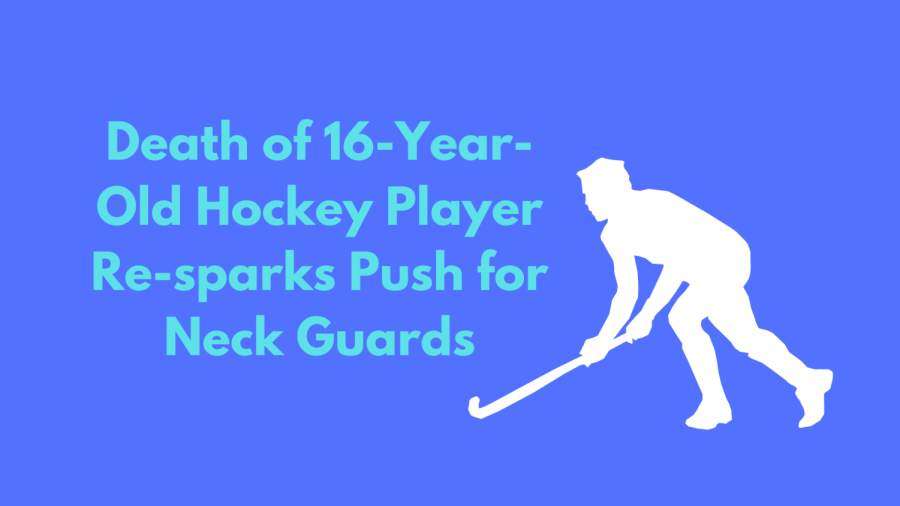Death of 16-Year-Old Hockey Player Re-sparks Push for Neck Guards
The death of hockey player Teddy Balkind has raised questions over neck guard requirements.
January 26, 2022
On January 8, 2022, during a hockey game in Greenwich, Connecticut, 16-year-old hockey player and student at St. Luke’s School, Teddy Balkind, suffered a fatal injury during an on-ice collision in which another player’s ice skate cut his neck. He, unfortunately, passed away at Greenwich Hospital during surgery. To honor his memory, homes all over New England leaned hockey sticks in front of their houses.
This heartbreaking tragedy has reignited the debate for mandating neck guards for hockey players. Canada, Sweden, and many European leagues mandate having a form of neck protection for amateur players, but currently, U.S.A. Hockey only recommends that players try to wear neck guards. Many players dislike neck guards as they are typically made of uncomfortable and hot material such as Kevlar, nylon, foam, and Velcro. Also, receiving skate lacerations are generally quite rare, especially to the neck. A survey in 2008 by U.S.A. Hockey revealed that only 1.8 percent of hockey players reported having ever seen or received such an injury during play. 1 out of 4 of the players who were cut were even wearing neck protection.
Nevertheless, these types of accidents do happen. In 1975, 18-year-old James Dragone Jr. also died from a cut to the neck by an opposing player’s skate. In 2017, 16-year-old Cassidy Gordon avoided serious injury in another similar situation because she was wearing a neck guard. These accidents are also not exclusive to amateur players, but even to professional NFL players. In 1989, Clint Malarchuk of the St. Louis Blues suffered a cut to the neck from Steve Tuttle when he crashed into the goal crease and his skate lacerated Malarchuk’s carotid artery and jugular vein; and Richard Zednik of the Florida Panthers was also cut in the neck when his teammate Olli Jokinen lost his balance in 2008. Luckily, these two players both survived their injuries.
It still is evident that neck guards can help prevent such a tragic event from happening again. Perhaps there will be new designs for more comfortable neck guards that can effectively protect players, and should U.S.A. Hockey mandate wearing neck protection, hockey can continue to be an exciting and enjoyable sport without future young players encountering the unfortunate circumstances that befell Teddy Balkind.

























